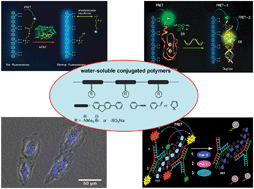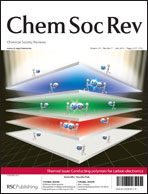Over the past decades, water-soluble conjugated polymers (CPs) have gained increasing attention as optical platforms for sensitive detection of biomacromolecules (DNA, protein and cell) due to the amplification of fluorescent signals. To meet the requirement for high throughput assays, chip and microarray techniques based on CPs have also been developed. Very recently, fluorescence imaging in vivo and at the cellular level have also been successfully accomplished using these water-soluble CPs. In this tutorial review, we provide a brief review of the synthesis and optical properties of CPs, focusing especially on their applications in biosensors and cell imaging.
You have access to this article
 Please wait while we load your content...
Something went wrong. Try again?
Please wait while we load your content...
Something went wrong. Try again?


 Please wait while we load your content...
Please wait while we load your content...